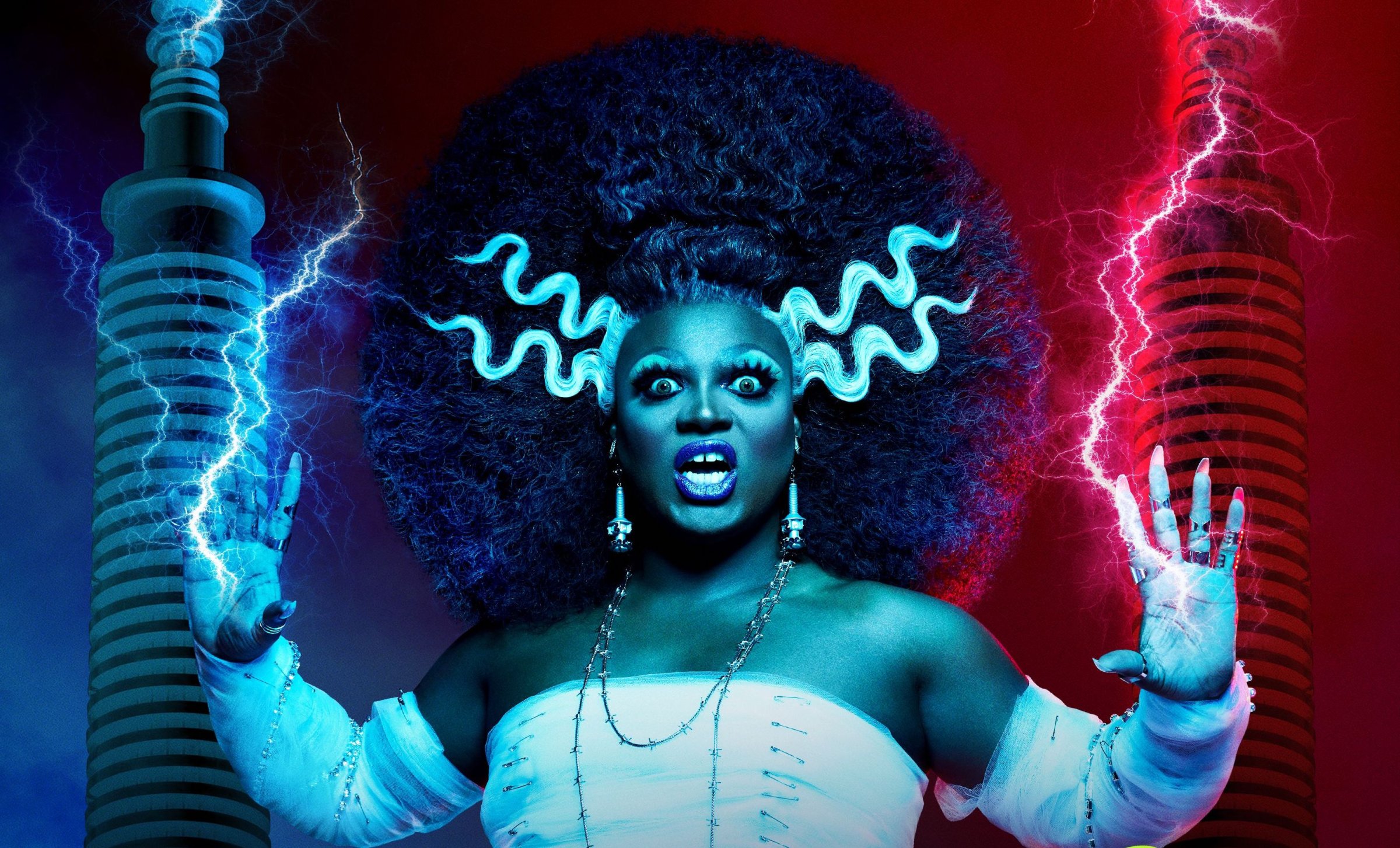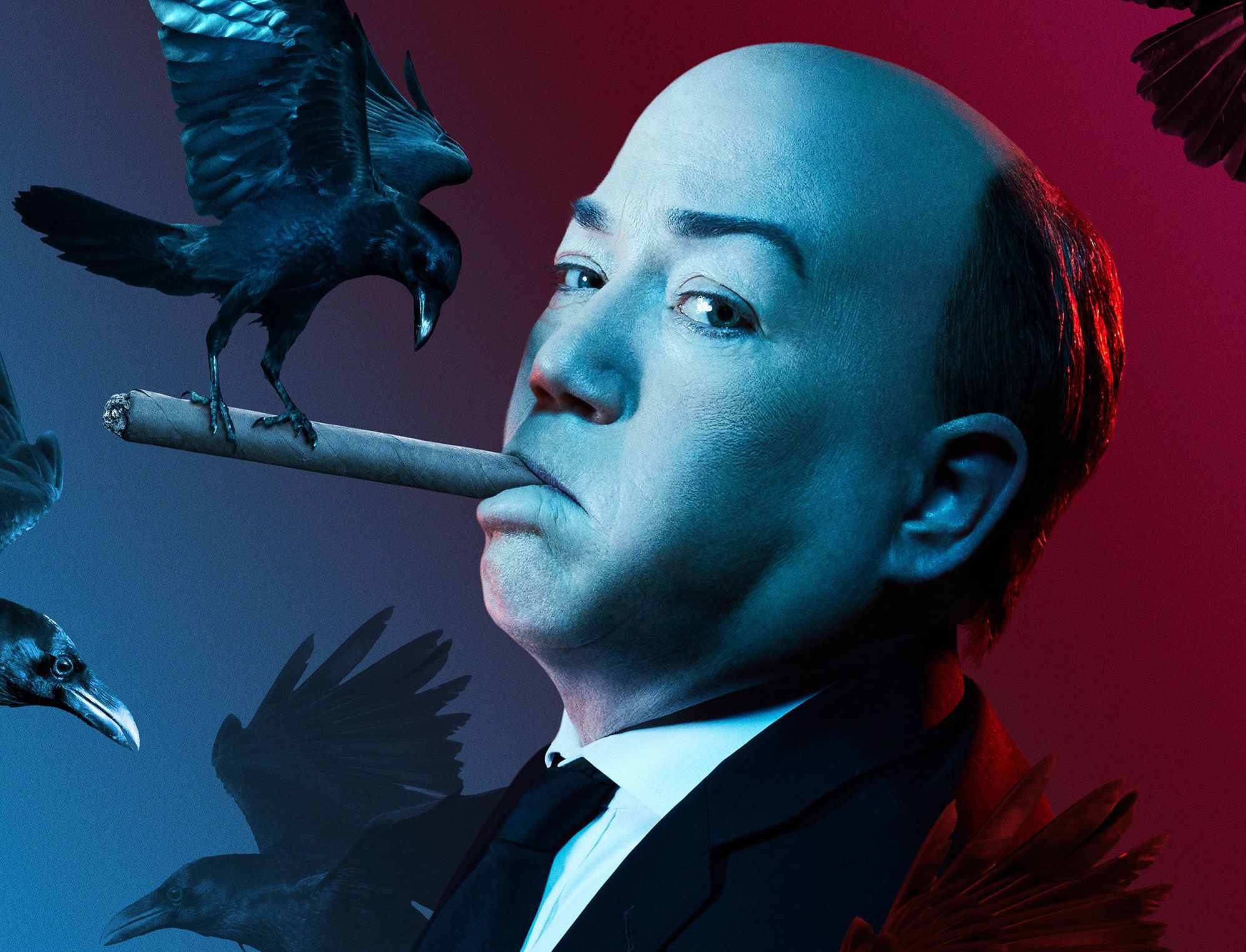
Imagine the year is 1935. It’s a dark and stormy night in the midst of the Great Depression, the Hays Code banning motion picture portrayals of “sexual persuasion and immorality” is newly in effect, and you’re watching the Bride of Frankenstein spurn the man she was literally made for on the silver screen.
Maybe the scene—or the entire subtext-rich story—comes across like a wink from director James Whale, himself openly gay in a time and culture that meant his sexuality endangered both his livelihood and his life. Maybe you go still at the sudden, strange tension in your heart, the words for how you feel not yet known to you. Or maybe you’re holding hands with a partner of the state-sanctioned gender, oblivious to the queerness of Bride’s choice to reject the preordained future foisted upon her, and construct the meaning of her own monstrous femininity for herself.
No matter how you might react, you’re watching an example of vintage queer horror—a story whose uncanny inversion of the gender and sexuality norms of its time struck a note that was inaudible to some, but rang clear for those who also found themselves outside those norms. From the start, the way horror can be a funhouse mirror reflection of the cultural anxieties and preoccupation with what it means to be a monster have made it an ideal venue for stories that resonate with the marginalized. And since the fateful days of Frankenstein, Dracula, and The Picture of Dorian Gray, it has been built on integral contributions from queer creators.
Queer for Fear, a four-part documentary series out now from the horror streaming service Shudder, explores the evolution of horror through a queer lens, in an expansive work from executive producers and horror veterans Bryan Fuller (Hannibal, Pushing Daisies) and Steak House (By Hook or by Crook, Disney Launchpad).
Constructing community through horror with Queer for Fear
Conceived as a follow-up to Horror Noire: A History of Black Horror, Queer for Fear: The History of Queer Horror features interviews with actors, writers, directors, producers, and creators who are icons of horror and suspense, including Boys Don’t Cry and Carrie (2013) director Kimberly Peirce; Scream writer Kevin Williamson; Dear White People and Bad Hair writer Justin Simien; In the Dream House writer Carmen Maria Machado; and Yellowjackets director Karyn Kusama and cast members Jasmin Savoy Brown, Tawny Cypress, and Liv Hewson.
The vibe is part horror history curriculum and part old-fashioned salon, very much by design. “It’s like if you said, ‘Let’s go to the Algonquin and hang out with the savvy horror art queers,’” Fuller tells TIME.
With such a large and enthusiastic group, a community quickly built itself around the project, House says. “We wanted to interview a broad spectrum of people, because we were looking at a lot of movies from the past that white men made, and we wanted to make sure to be looking at it in a different lens today.” For instance, as the show’s third episode discusses films featuring “dangerous women” in all their gender-transgressing glory, the interviewees reflect on how these scenes and their impact are shaped by having been created entirely by men.
Read more: 21 Underrated Horror Movies You Probably Haven’t Seen and Can Stream Right Now
While the producers approached filming with an outline, the personal stories and connections of both Queer for Fear’s historical subjects and its interviewees are what brought the series to life. Says House, “We discovered we were going to push boundaries further and further with each new person we talked to.”
In one moving moment in episode two, Gretel & Hansel writer and son of Psycho star Anthony Perkins, Oz Perkins, describes the emotional shockwaves sent through his family as his father’s career was both defined and derailed by the franchise: “Psycho was too good and therefore no good.” According to Perkins, Norman Bates’ notoriety turned the truth of his father’s sexuality into a crushing secret, putting immense pressure on a loving, if complicated, home life. Fuller says Perkins was initially only meant to have a couple lines in the series. But when the depth of his story became clear, Fuller insisted the production take the time to capture it. “It was about slowing down the history lesson and allowing the audience to absorb some of the personal aspects.”

For some, Queer for Fear was an opportunity to discover with delight just how many people shared their passion for horror. For others, like Yellowjackets star Jasmin Savoy Brown, and series consultant and Attack of the Queerwolf podcast host Nay Bever, it was a chance to deepen and strengthen the conversation, recruiting others to join the salon and, by extension, the community. For all involved, to participate in the show was to join a conversation spanning everything from the very first time they felt seen onscreen to the sexual proclivities of Rebecca’s Mrs. Danvers—discussions they might previously have thought was only their own internal monologue.
House says the timing of Queer for Fear, as LGBTQ+ people face increasing cultural and legislative attacks, is especially important. “Our rights are being challenged again. I hope it pushes buttons, pushes boundaries, and gets people talking. I hope this show is out there for people who don’t have a community.”
How queer representation, in horror and elsewhere, has evolved
As Justin Simiens says in Queer for Fear, “The evolution of queer horror really parallels the evolution of queer liberation.” As queer people have gained a louder voice in public conversation, there has been an increase in explicit television and film LGBTQ+ representation. Projects exploring queer themes are not only being greenlit, but actively solicited—just look at this very series.
And yet, as House points out, “Some things are better. Nothing’s 100% better.”
Queer creators and actors are still discriminated against by studios that have already hit what they consider to be their quota of LGBTQ+ stories, reducing a boundless diversity of experiences to a single category on a streamer’s dropdown menu. Black and brown, transgender, nonbinary, and gender nonconforming creators face these same hurdles, further exacerbated by racism and transphobia. The films that do get made then face high expectations from audiences and studios to open the hearts and wallets of an entire community.
Mix challenges like these with a genre as maligned as horror, and you may be fated to blunt its bite, at least sometimes. You could end up with a romp like A24’s scary-silly neon spectacle Bodies Bodies Bodies. Or you could also get a film like Peacock’s queer slasher They/Them, so lost in its own toothlessly self-serious approach to its subject matter that it forgets to bring the fear. It’s no wonder storytelling can sometimes seem left by the wayside.
Read More: How Smile Pays Tribute to Horror Classics Like The Ring and Rosemary’s Baby
The queer horror examined in the series, which includes titles spanning from the gothic literature of the 1800s to the camp vampires of the 1980s, was almost never explicit, owing to the cultural and legal constraints that kept queer characcters from being blatantly identified as such. In those films, their queerness became a puzzle to be solved—and for decades, that puzzle was largely the only template available. Audiences looking to see themselves reflected developed a keen eye for decoding. Newer “queer horror” that explicitly labels its characters and plots often offers a vastly different viewing experience.
Fuller, for one, says he’s always been excited by the “decoder ring” experience of “drawing the queer metaphor. Of course,” he adds, “it may be generational because that’s always been my experience.”
“I find it so satisfying, like a delicious meal, that when I see modern queer characters being explicit, it’s not as exciting because it’s so one-to-one. [We might] have two queer characters, but they’re just as dumb as everybody else and die just as horribly. That’s the price we pay,” he says.
At the same time, research and lived experience consistently demonstrate that meaningful representation is absolutely vital. Fuller, House, and Queer for Fear’s interviewees across the board were eager to celebrate the immense and essential progress that’s been made in opportunities for queer creators to tell their stories. Discussing the exciting queer horror especially present today in shows like Yellowjackets, House says, “A huge difference now is we’re starting to get people telling stories [in which] they’re not explaining [queerness]. It’s just happening. I think that’s the evolution.”
It’s when the only substance to a character is a two-dimensional rainbow nametag, that representation falls flat. As Queer for Fear makes clear, queer stories are exciting in large part because of the opportunity to relate to the dynamics and feelings they portray, whether they’re sweet, scary, electrifying, agonizing or all of the above.
Read More: The 52 Most Anticipated Movies of Fall 2022
The future of queer horror
Queer creators today find themselves tasked with both educating and entertaining. Optimistically, an adjustment period is more than understandable. So what does the ideal future of queer horror hold?
“I hope we get to make movies with queer people in them, not discussing why we’re queer, or how did we become queer, or coming out. I hope we have stories about us as people.” House says. “That would be my dream for the filmmaking community.”
In response to those who say with derision that horror was better before it “got woke,” Fuller and House can only laugh. As House points out, “There’s always been a queer mafia in Hollywood.” People who think horror just recently became a refuge for the marginalized should, as Fuller suggests, “maybe try watching Queer for Fear. We have a lot of material—enough for two more seasons.”
And although the series covers a staggering amount of historical material, the personal is what gives it its tell-tale heart. In a community of chosen family, Queer for Fear is like a scrapbook of sorts, tracing throughlines and documenting generations of a genre in which countless queer people have found a home.
More Must-Reads from TIME
- Introducing the 2024 TIME100 Next
- The Reinvention of J.D. Vance
- How to Survive Election Season Without Losing Your Mind
- Welcome to the Golden Age of Scams
- Did the Pandemic Break Our Brains?
- The Many Lives of Jack Antonoff
- 33 True Crime Documentaries That Shaped the Genre
- Why Gut Health Issues Are More Common in Women
Contact us at letters@time.com